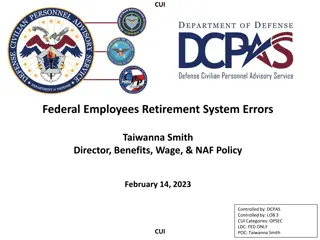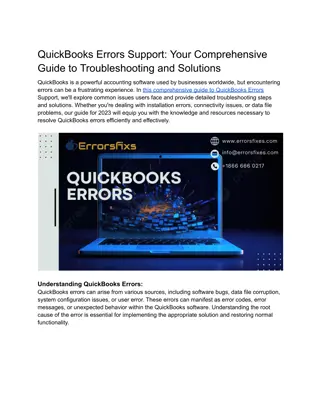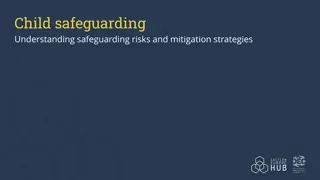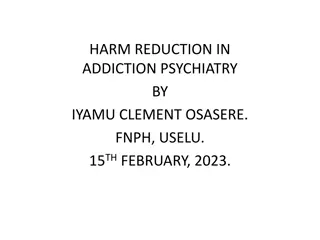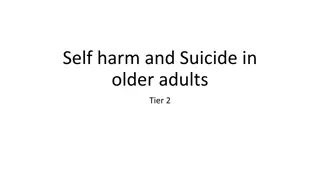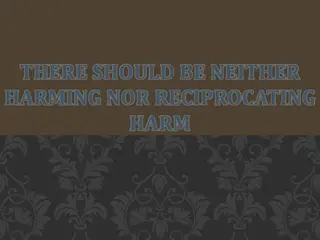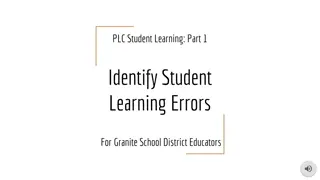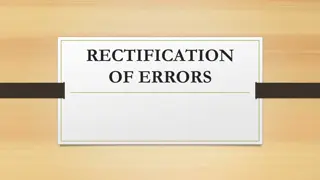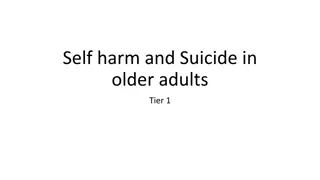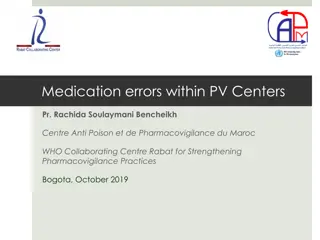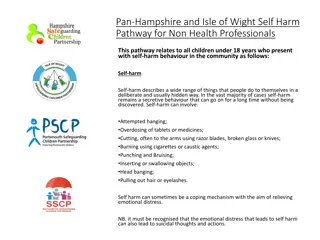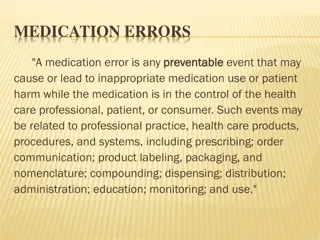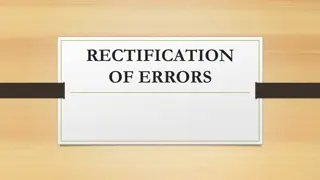Learning from errors to prevent harm
Delve into the realm of patient safety to understand and prevent harm by learning from errors. Explore the nature of errors, definitions, human factors, and more to enhance healthcare practices.
Download Presentation

Please find below an Image/Link to download the presentation.
The content on the website is provided AS IS for your information and personal use only. It may not be sold, licensed, or shared on other websites without obtaining consent from the author.If you encounter any issues during the download, it is possible that the publisher has removed the file from their server.
You are allowed to download the files provided on this website for personal or commercial use, subject to the condition that they are used lawfully. All files are the property of their respective owners.
The content on the website is provided AS IS for your information and personal use only. It may not be sold, licensed, or shared on other websites without obtaining consent from the author.
E N D
Presentation Transcript
Topic5 Learning from errors to prevent harm Patient Safety Curriculum Guide 1
Learning objective Understand the nature of error and how health- care providers can learn from errors to improve patient safety Patient Safety Curriculum Guide 2
Knowledge requirement Explain the terms: Error Violation Near miss Hindsight bias Patient Safety Curriculum Guide 3
Performance requirements: Know the ways to learn from errors Participate in the analysis of an adverse event Practise strategies to reduce errors Patient Safety Curriculum Guide 4
Error A simple definition is: Doing the wrong thing when meaning to do the right thing. Bill Runciman A more formal definition is: Planned sequences of mental or physical activities that fail to achieve their intended outcomes, when these failures cannot be attributed to the intervention of some chance agency. James Reason Patient Safety Curriculum Guide 5
Note: violation A deliberate deviation from an accepted protocol or standard of care Patient Safety Curriculum Guide 6
Errors and outcomes Errors and outcomes are not inextricably linked: Harm can befall a patient in the form of a complication of care without an error having occurred Many errors occur that have no consequence for the patient as they are recognized before harm occurs Patient Safety Curriculum Guide 7
Human factors principles remind us that: Error is the inevitable downside of having a brain! One definition of human error is human nature Patient Safety Curriculum Guide 8
Human beings make mistakes Regardless of their experience, intelligence, motivation or vigilance, people make mistakes Activity: Think about and then discuss with your colleagues any silly mistakes you have made recently when you were not in your place of work or study - and why you think they happened Patient Safety Curriculum Guide 9
The health-care context is problematic When errors occur in the workplace the consequences can be a problem for the patient . a situation that is relatively unique to health care In all other respects there is nothing unique about health-care errors ... they are no different from the human factors problems that exist in settings outside health care Patient Safety Curriculum Guide 10
Summary of the principal error types Attentional slips of action Skill-based slips and lapses Lapses of memory Errors Rule-based mistakes Mistakes Knowledge- based mistakes Source: J. Reason Patient Safety Curriculum Guide 11
Situations associated with an increased risk of error Inexperience* Time pressures Inadequate checking Poor procedures Inadequate information * Especially if combined with lack of supervision Patient Safety Curriculum Guide 12
Individual factors that predispose to error Limited memory capacity Further reduced by: fatigue stress hunger illness language or cultural factors hazardous attitudes Patient Safety Curriculum Guide 13
Dont forget . If you re Hungry Angry Late Tired .. H A L T or Patient Safety Curriculum Guide 14
A performance-shaping factors checklist I Illness M others S A F E Emotion Medication:prescription, over-the-counter and Stress Alcohol Fatigue Am I safe to work today? Patient Safety Curriculum Guide 15
Incident reporting/monitoring Involves collecting and analyzing information about any event that could have harmed or did harm anyone in the organization A fundamental component of an organization s ability to learn from error Patient Safety Curriculum Guide 16
Removing error traps A primary function of an incident reporting system is to identify recurring problem areas - known as error traps (J.Reason) Identifying and removing these traps is one of the main functions of error management Patient Safety Curriculum Guide 17
Hindsight Bias Before the Incident Afterthe Incident Modifiedfrom R. Cook, 2005,ABrief Look at the New Look in Complex System Failure, Error , Safety and Resilience Patient Safety Curriculum Guide 18
Culture: a workable definition 'Shared values (what is important) and beliefs (how things work) that interact with an organization s structure and control systems to produce behavioural norms (the way we do things around here)' James Reason Patient Safety Curriculum Guide 19
Culture in the workplace It is hard to change the world as a junior health-care professional But you can be on the look out for ways to improve the system you can contribute to the culture in your work environment Patient Safety Curriculum Guide 20
Incident reporting and monitoring strategies Successful strategies include: anonymous reporting timely feedback open acknowledgement of successes resulting from incident reporting reporting of near misses - free" lessons can be learned - system improvements can be instituted as a result of the investigation but at no cost to a patient Source: E.B. Larson Patient Safety Curriculum Guide 21
Root cause analysis (RCA) A structured approch to incident analysis Established by the National Center for Patient Safety of the US Department of Veterans Affairs http://www.va.gov/NCPS/curriculum/RCA/index.html Patient Safety Curriculum Guide 22
RCA model (1) A rigorous, confidential approach to answering: What happened? Who was involved? When did it happen? Where did it happen? How severe was the actual or potential harm? What is the likelihood of recurrence? What were the consequences? Patient Safety Curriculum Guide 23
RCA model (2) Focuses on prevention, not blame or punishment Focuses on system level vulnerabilities rather than individual performance It examines multiple factors such as: - communication - training - fatigue/scheduling - environment/equipment - rules/policies/procedures - barriers Patient Safety Curriculum Guide 24
Personal error reduction strategies Know yourself: eat well, sleep well, look after yourself Know your environment Know your task(s) Preparation and planning; What if ? Build checks into your routine Ask if you don t know! Patient Safety Curriculum Guide 25
Mental preparedness Assume that errors can and will occur Identify those circumstances most likely to breed error Have contingencies in place to cope with problems, interruptions and distractions Mentally rehearse complex procedures James Reason Patient Safety Curriculum Guide 26
Summary Health-care error is a complex issue, but error itself is an inevitable part of the human condition Learning from error is more productive if it is considered at an organizational level Root cause analysis is a highly structured system approach to incident analysis Patient Safety Curriculum Guide 27











